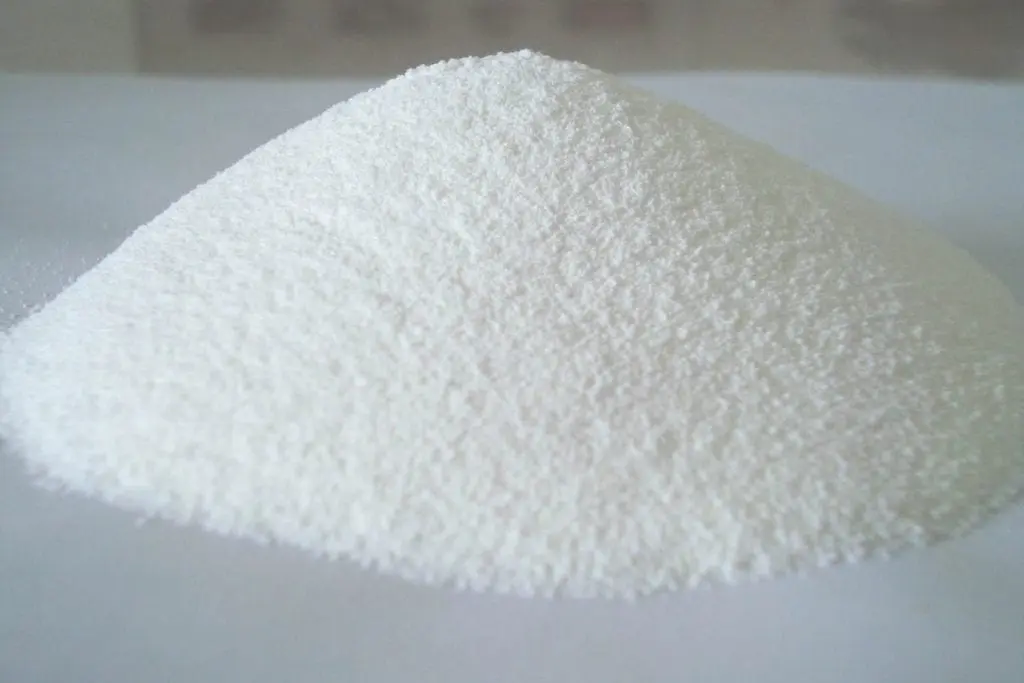Plants need a series of nutrients to be able to grow and develop , such as phosphorus, nitrogen and calcium. All of them are very important, so much so that the excess or lack of one of them will make them sick in a matter of time, which can be longer or shorter depending on its importance. Thus, if it lacks iron, its leaves will immediately become chlorotic and it will stop growing, but if it lacks boron, it will take longer to show symptoms.
Taking this into account, it is essential that they are paid regularly to prevent them from getting sick. With what? It will depend on the type of plant and what we are interested in achieving. This time we are going to focus on potassium sulfate , a fertilizer that will help control the maturity and fattening of the fruits.
Index
- 1 What do plants use potassium for?
- 2 What is potassium sulfate?
- 3 When can it be used?
- 4 How much potassium do plants need?
- 5 How do I know if my plant lacks potassium?
What do plants use potassium for?
Potassium is found in the soil from silicates from rocks and magmatic minerals such as micas and feldspars. We can distinguish three types:
- Directly assimilable potassium : which is what is fixed on the surface of the clays and in the clay-humic complex.
- Interlaminar potassium : it is found between the layers of the clay. Roots have a hard time absorbing it.
- Potassium in mineral fraction : It is found in the soil, but it cannot be absorbed by plant roots unless it is broken down by bacteria.
This nutrient has very important functions for plants:
- It ensures that the cells do not lack water, which is why it is related to the fattening and quality of the fruit.
- It controls the permeability of the cell membranes, which means that the less water that is lost, the better the fruits will be preserved.
- It contributes to improving the cold resistance of plants by regulating the salt concentration of cell juices.
- It improves resistance to drought, since it is responsible for reducing the speed of transpiration.
- It contributes to elaborate sugars, giving the sweet flavor to the fruits.
What is potassium sulfate?
Potassium sulfate is the potassium salt of sulfuric acid . It is one of the most interesting fertilizers for growing plants, especially aquatic ones, since it is free of chlorine. It combines two essential nutrients: potassium and sulfur, both assimilable by plants.
Normally, the quantity and richness of this fertilizer is 50% , and this is related to the fertilizer units (UF). To establish the amount of potassium fertilizer that is provided to a crop (according to the UF) and potassium sulfate, it is done using the following relationship:
100 UF of potassium for a culture = 200kg of water-soluble potassium sulfate, K2O (50%).
When can it be used?

Potassium sulfate is a fertilizer that can be used throughout the fruiting season , that is, from the first moment the flower is pollinated until two weeks before the harvest of the fruits. But, yes, it can only be used if we have an alkaline soil, that is, with a high pH, since it also serves as a pH reducer.
As a recommendation, if they are sprinkled, you can add between 1 and 2.5 grams/litre of water; and if it is by dripping from 2 to 9kg per 100 liters of water. Even so, you should know that the amount can vary depending on the pH of the soil, so before starting to fertilize the plants with it, it is important to carry out a soil test since the soil may have adequate levels of potassium and that , therefore, fertilization with potassium sulfate is unnecessary.
The crops that best respond to this fertilizer are fruit trees, banana trees, legumes, cabbages, among others.
How much potassium do plants need?
It will depend on the type of plant, but those that are grown for their leaves and/or fruits need a lot. For example
Outdoor crops:
- Broccoli (15/20 t/ha): 370-450kg/ha
- Spinach (22-28 t/ha): 180-220kg/ha
- Melon (30-40 t/ha): 250-330kg/ha
- Watermelon (45-55 t/ha): 180-220kg/ha
- Tomato (55-65 t/ha): 300-330kg/ha
How to know if my plant lacks potassium?
If the plant is deficient in potassium, it will show these symptoms:
- Chlorosis – Middle and lower leaves will start to look yellowish, starting from the edge inwards.
- Slow growth, practically none: not having enough potassium, the plant will hardly grow.
- Less resistance to cold and lack of water : there will be less water circulating through the plant as a result of the lack of potassium, so it will become more susceptible to cold and drought.
- Defoliation : In the event that the deficiency is not corrected, the plant could lose all the leaves.
- Uneven fruit ripening : Potassium is very important for fruit development; if it is not present in sufficient quantities, they will not be able to ripen properly.
- Poor pest resistance – When it doesn’t have everything it needs, the plant becomes weak, so it can’t defend itself against pests.

And with this we end. As you have seen, potassium is an essential element for plants, with potassium sulfate being a highly recommended fertilizer so that they can grow without problems.
